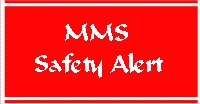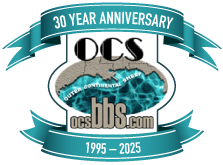Coiled Tubing Incidents
Effective Date: 4/10/2000
 | U.S. Department of the Interior |
| Safety Alert No. 187 April 3, 2000 | Contact: Joe Gordon |
Coiled Tubing Incidents
Two recent coiled tubing operations in the Gulf of Mexico experienced similar operational problems that culminated in uncontrolled well flow events. In both situations, coil tubing was being snubbed into the wellbores when the coiled tubing strings encountered unknown obstructions, causing the coiled tubing to stop abruptly. The abrupt stop and resulting compression of the coiled tubing caused the tubing to part between the injector head and the stripper assembly. In both situations, the blowout preventer (BOP) was activated, but BOP intervention failed. The tubing was successfully sheared in both cases but could not be pulled because the pipe had parted above the stripper assembly, thereby leaving a section of tubing across the blind rams. In addition, back-pressure valves were not installed in the coiled tubing strings, thereby allowing flow up the tubing. Attempts were made to shut in the wells using the valves on the tree and, in one case, the tubing-retrievable, surface-controlled, subsurface safety valve, but with no success. Coiled tubing remained across the valve assemblies. Both situations escalated into uncontrolled flow and personnel were forced to evacuate the platforms.
Safe coiled-tubing operations should begin with planning that includes a job safety analysis (JSA) to identify all potential hazards pertinent to the operations (including but not limited to backflow up the coiled tubing, obstructions in the wellbore, kinking of the pipe between injector head and stripper assembly, wellbore geometry, coiled tubing fatigue history, well conditions).
Once the hazards are identified, procedures should be developed or altered to remove the hazards or minimize the consequence of these hazards. Procedures should include, but are not limited to, the following:
| Setting hydraulic snubbing and pulling force sufficiently below coiled tubing minimum yield to prevent buckling or parting of the pipe. These calculations should include, but are not limited to, wellbore geometry and running speed. They should be verified by a second party. |
Use of a back-pressure valve to prevent backflow up the coiled tubing. In cases where reverse circulation is required, contingencies should be in place to offer the same level of protection such as:
|
Critical to any operation is communication between all personnel involved in the operation. As a minimum, the following practices should be adhered to:
- The supervisory personnel should monitor and verify that operations are being carried out according to plans.
- Should a personnel change occur during a job, it is imperative to communicate critical information. If possible, personnel should be consistent through out the project.
It is essential that all personnel are trained in coiled tubing and well control procedures and operations. Those procedures should be written, site and equipment specific, and readily available to all personnel. As a minimum, they should address BOP activation, equipment capabilities and limitations, and kill procedures. Well-control drills shall be conducted on a weekly basis (30 CFR 250.616(c)) to ensure that all necessary personnel know and fully understand the well-control procedures and the capabilities and limitations of all their equipment.
–GOMR–MMS–
Visit our Safety Information Website:
http://www.gomr.boemre.gov/homepg/offshore/safety/safety.html






